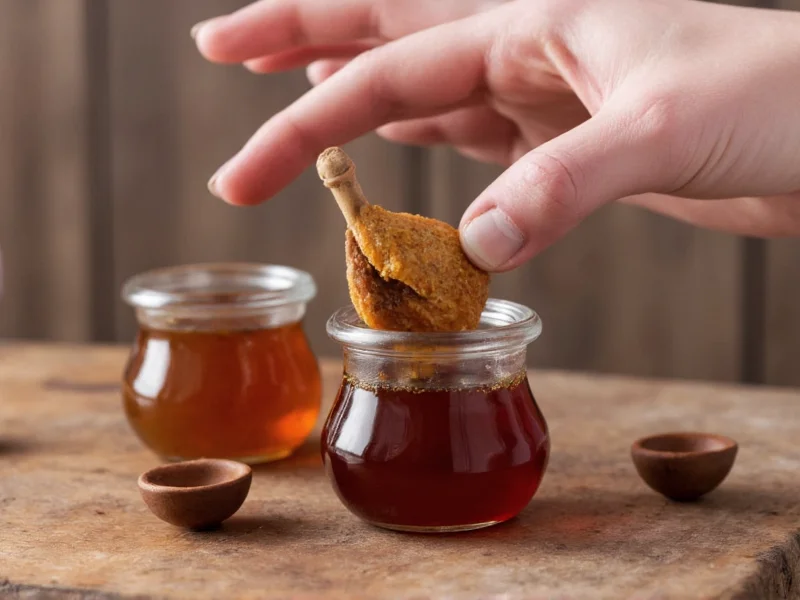Understanding molasses shelf life helps prevent unnecessary food waste while ensuring optimal flavor in your recipes. This versatile sweetener has remarkable longevity due to its high sugar content and low moisture, but proper storage practices significantly impact its quality over time.
Factors That Determine Molasses Longevity
Molasses shelf life depends on several key factors that affect both safety and quality. The sugar concentration creates an environment inhospitable to most bacteria, while the acidic pH (typically 5.0-5.5) further inhibits microbial growth. Unlike many pantry staples, molasses doesn't technically expire in the traditional sense—it gradually degrades in quality rather than becoming unsafe.
Unopened Molasses Shelf Life Explained
Commercially packaged molasses comes with a "best by" date rather than an expiration date. This date indicates peak quality, not safety. Properly stored unopened containers maintain optimal flavor and texture for:
| Container Type | Room Temperature | Refrigerated |
|---|---|---|
| Glass or metal can | 2-3 years past date | 3-5 years past date |
| Plastic bottle | 1-2 years past date | 2-3 years past date |
The container material significantly impacts longevity. Glass and metal provide superior protection against light and oxygen compared to plastic, which can slowly degrade over extended periods.
Opened Molasses Shelf Life Guidelines
Once you break the seal, how long does molasses last before quality declines? The clock starts ticking immediately after opening, though proper storage extends usability:
- Pantry storage: 6-12 months for optimal quality
- Refrigerated storage: 12-24 months with minimal quality loss
Refrigeration isn't required but significantly slows the crystallization process and preserves flavor compounds. Always use clean, dry utensils when handling opened molasses to prevent contamination.
Proper Molasses Storage Techniques
Maximize your molasses shelf life with these evidence-based storage methods:
- Seal tightly after each use—oxygen exposure accelerates quality degradation
- Store in original container whenever possible—transferring to other containers risks contamination
- Keep away from heat sources—maintain temperatures below 75°F (24°C) for best results
- Prevent moisture introduction—never add water to hardened molasses
- Consider refrigeration for long-term storage beyond 6 months after opening
Contrary to popular belief, adding lemon juice or vinegar doesn't extend molasses shelf life. These additives alter the pH balance and may encourage crystallization rather than prevent it.
Identifying Spoiled Molasses: What to Look For
While molasses rarely becomes unsafe, quality deterioration affects recipe results. Watch for these signs that indicate your molasses has passed its prime:
- Visible mold growth—any fuzzy spots mean immediate discard
- Unusual odor—sour or fermented smells indicate spoilage
- Significant color change—darkening beyond normal aging
- Crystallization that won't dissolve—excessive sugar crystals that won't liquefy with gentle warming
- Off-flavors—sour or bitter taste instead of rich sweetness
Minor crystallization and slight darkening are normal aging processes that don't affect safety. Gently warming crystallized molasses in a water bath typically restores pourability without compromising quality.
Special Considerations for Different Molasses Types
All molasses varieties share similar shelf life characteristics, but subtle differences exist:
- Light molasses—slightly shorter shelf life due to lower sugar concentration
- Blackstrap molasses—longest lasting variety thanks to highest sugar content and acidity
- Sulfured vs. unsulfured—sulfur content doesn't significantly impact shelf life
- Organic molasses—identical shelf life to conventional when properly processed
Homemade molasses substitutes have dramatically shorter shelf lives—typically 2-4 weeks refrigerated—due to lack of commercial processing and preservatives.
Practical Tips for Maximizing Molasses Usability
Extend your molasses shelf life with these professional kitchen-tested techniques:
- Wipe the rim clean after each use to prevent sticky buildup that compromises the seal
- Store upright in a dedicated pantry spot away from temperature fluctuations
- Consider dividing large containers into smaller portions for frequent use
- Freeze small quantities in ice cube trays for baking projects (thaw before use)
- Keep a dedicated molasses measuring spoon to prevent cross-contamination
When properly stored, molasses maintains sufficient quality for baking and cooking long after its "best by" date. The gradual thickening that occurs over time actually benefits certain applications like gingerbread and baked beans where thicker consistency is desirable.
Does molasses go bad if not refrigerated after opening?
Molasses doesn't require refrigeration after opening but maintains better quality when refrigerated. At room temperature, opened molasses typically retains optimal quality for 6-12 months. Refrigeration extends this period to 12-24 months by slowing crystallization and preserving flavor compounds.
Can you use molasses after the expiration date?
Yes, molasses remains safe well beyond the printed date when stored properly. The "best by" date indicates peak quality, not safety. Unopened molasses typically maintains good quality for 1-2 years past this date. Always check for signs of spoilage like mold or off odors before using expired product.
Why does my molasses get hard over time?
Molasses hardens due to gradual moisture loss and sugar crystallization. This natural process occurs more quickly when exposed to air or temperature fluctuations. Gently warming hardened molasses in a water bath (not microwave) typically restores pourability without affecting quality. Prevent hardening by ensuring tight seals after each use.
How can you tell if molasses has gone bad?
Signs of spoiled molasses include visible mold, sour or fermented odors, significant color changes beyond normal darkening, and off-flavors. Minor crystallization and slight thickening are normal aging processes that don't indicate spoilage. When in doubt, smell and taste a small amount—spoiled molasses has distinctly unpleasant sourness.
Does blackstrap molasses last longer than regular molasses?
Yes, blackstrap molasses generally has a slightly longer shelf life than lighter varieties due to its higher sugar concentration and lower moisture content. The increased acidity (pH around 5.0) also creates a less hospitable environment for microbial growth. All molasses types remain safe indefinitely when stored properly, but blackstrap maintains optimal quality for 1-2 months longer than light molasses.











 浙公网安备
33010002000092号
浙公网安备
33010002000092号 浙B2-20120091-4
浙B2-20120091-4